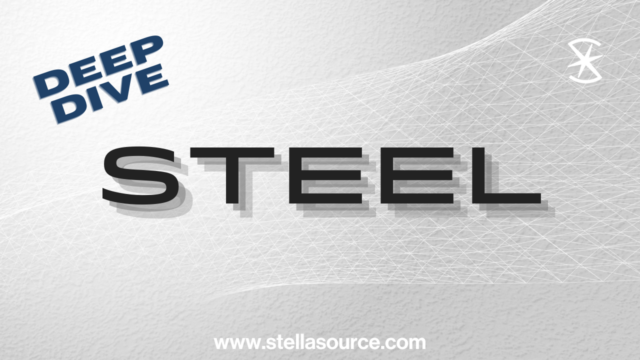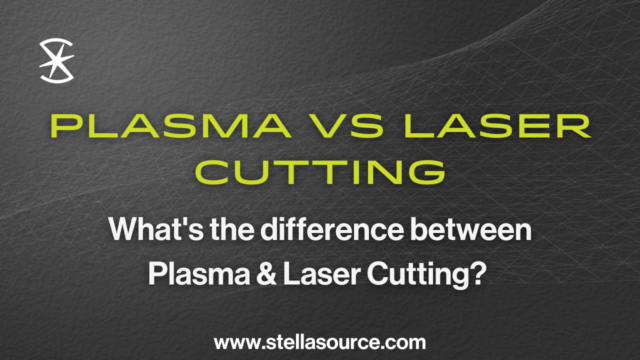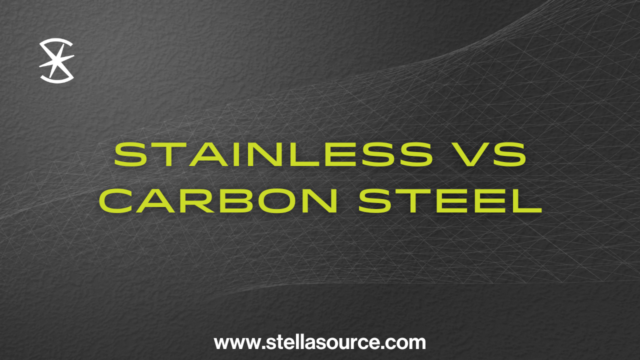Metal cutting machines have ushered in a transformative era for the steel industry, revolutionizing the way steel is processed, shaped, and utilized in various applications. From the early days of manual cutting tools to the sophisticated computer-controlled systems of today, the evolution of metal cutting machines has not only accelerated production but also enhanced precision and efficiency in the steel manufacturing process. These machines have played a pivotal role in unlocking the true potential of steel as a versatile and essential material, enabling the creation of intricate designs, reducing material wastage, and ultimately propelling the steel industry into a new era of innovation and growth.
In this blog post, we will explore the five most common types of metal cutting machines: Plasma, Oxy-Fuel, Laser, Saw, and 3-Axis Mills. We’ll delve into their histories, most frequent uses, and highlight the advantages and disadvantages of each machine.
Plasma Cutting Machines
Plasma cutting was invented in the 1960s, a result of welding, as a method to cut metals with improved precision and speed. It was used more due to its ability to generate a cleaner edge. Initial machines were expensive, slow and typically used for mass production. Over the years, advancements in plasma cutting technology have led to more efficient and automated systems.
In the 1990’s, plasma cutting was revolutionized with the understanding of how electrodes work with oxygen plasmas which made plasma cutting more competitive due to cutting speed and quality. It became as cost effective to use as a laser or oxy fuel machine.
Frequently used in metal fabrication, automotive repair, and industrial construction, plasma cutting, excels at cutting through electrically conductive materials such as steel, stainless steel, aluminum, copper, and brass.
Advantages of Plasma Cutting:
- High cutting speed and efficiency.
- Capable of cutting thick metals.
- Precise cutting with minimal heat-affected zones.
- Can be automated for increased productivity.
Disadvantages of Plasma Cutting:
- Limited cutting capabilities on non-conductive materials.
- Initial equipment costs can be high.
- Produces substantial noise, fumes, and hazardous materials.
Oxy Fuel Cutting Machines
Oxy-fuel cutting has a long history, dating back to the 19th century when it was used for welding and cutting metals. It was developed by two French engineers, Edmond Fouche and Charles Picard, who developed oxygen-acetylene welding in 1903. The process was improved and refined during the 20th century.
Interestingly, oxy fuel cutting is not considered cutting. The cut edge is the result of a chemical reaction between pure oxygen and steel. The use of pure oxygen instead of air makes the flame hot enough to melt steel.
Oxy-fuel cutting is commonly used in metal recycling, shipbuilding, and industrial construction, especially for thicker metals. It is ideal for cutting carbon steel and low-alloy steels. It is not able to cut aluminum or stainless steel.
Advantages of Oxy Fuel Cutting
- Cost-effective for thicker materials.
- Portable and suitable for outdoor use.
- Simple operation and setup.
- Suitable for cutting rusty or dirty materials.
Disadvantages of Oxy Fuel Cutting
- Slower cutting speed compared to other methods.
- Limited precision on thinner metals.
- Significant heat-affected zone.
- Not suitable for cutting non-ferrous metals.
Laser Cutting Machines
The development of the first laser, a ruby laser, by Theodore Maiman in 1960, opened up new possibilities for various applications, including cutting. However, it was not until the mid-1970s that practical laser cutting machines began to emerge. Initially, these machines were limited in power and capability, mainly used for cutting thin materials like paper, cloth, and plastics. As laser technology advanced, CO2 lasers became more prevalent due to their higher power levels and improved cutting capabilities on metals.
By the 1980s, advancements in computer numerical control (CNC) systems facilitated the automation and precise control of laser cutting machines, paving the way for their widespread adoption across industries. Since then, continuous research and development have led to the creation of more powerful and sophisticated laser cutting machines, capable of handling a wide range of materials with exceptional precision and efficiency.
Laser cutting is widely used in aerospace, electronics, jewelry, and various manufacturing industries. It is suitable for cutting a wide range of materials, including metals, plastics, wood, and ceramics.
Advantages of Laser Cutting Machines
- Exceptional precision and intricate designs possible.
- High-speed cutting with minimal material wastage.
- Minimal to no physical contact with the workpiece.
- Reduced heat-affected zone, leading to less distortion.
Disadvantages of Laser Cutting Machines
- High initial investment cost.
- Limited thickness capabilities for certain materials.
- Not as effective on highly reflective surfaces.
- Laser cutting non-conductive materials may require additional processes.
Saw Cutting Machines
Saw cutting is one of the oldest methods for cutting metals and traces its origins back to ancient times, where the basic principles of sawing were employed to cut wood and other materials manually.
As industrialization progressed, saw cutting machines were adapted for metalworking purposes, offering greater versatility and precision in shaping various metals. Over time, the development of more advanced materials and cutting technologies led to the emergence of modern bandsaws and abrasive saws, further enhancing the cutting capabilities across different industries.
Today, computer-controlled saw cutting machines, integrated with advanced sensors and automation, have become indispensable tools in manufacturing, construction, and metal fabrication, providing efficient, accurate, and cost-effective solutions for cutting various metal shapes and sizes.
Saw cutting is commonly used for cutting structural metals, tubing, pipes, and bars in construction, metalworking, and fabrication industries.
Advantages of Saw Cutting
- Simple operation and relatively low equipment cost.
- Suitable for cutting a wide range of metal shapes and sizes.
- Straight cuts with minimal material loss.
Disadvantages of Saw Cutting
- Lower precision compared to other methods.
- Generates more waste due to the width of the cut.
- Slower cutting speed for thicker materials.
- May cause burrs and rough edges.
3-Axis Mills (CNC Machining)
Computer Numerical Control (CNC) machining, including 3-axis mills, emerged in the 1940s and has since become a cornerstone of modern manufacturing. The initial developments in numerical control (NC) technology allowed for more precise and automated machining processes.
These early CNC cutting machines utilized punched tape as the input method for instructions. As technology advanced, the integration of computers and microprocessors in the 1960s and 1970s revolutionized CNC machining, enabling greater control, versatility, and efficiency in the cutting process. The introduction of CAD/CAM (Computer-Aided Design/Computer-Aided Manufacturing) systems further accelerated the adoption of CNC cutting machines, streamlining the design-to-production workflow and opening up new possibilities for complex and intricate designs.
3-axis mills are now a cornerstone of modern manufacturing, offering high precision, repeatability, and the ability to create a wide range of products across industries.
3-axis mills are extensively used in aerospace, automotive, and precision engineering industries for cutting and shaping complex metal components.
Advantages of 3-Axis Mills
- High precision and repeatability.
- Versatility to cut various materials and create intricate designs.
- Capable of producing complex 3D shapes.
- Automation allows for efficient batch production.
Disadvantages of 3-Axis Mills
- High initial setup and maintenance costs.
- Limited to cutting relatively smaller workpieces.
- Time-consuming for large-scale production.
- Skilled operators are required for programming and operation.
Metal cutting machines have come a long way since their inception, revolutionizing the way industries process and shape metals. Each machine type mentioned here has its own strengths and weaknesses, making them ideal for specific applications. From the high-speed precision of lasers to the versatility of CNC 3-axis mills, the choice of metal cutting machine depends on factors such as the material, thickness, intricacy of the design, and production requirements. Understanding the history, uses, advantages, and disadvantages of these machines empowers manufacturers to make informed decisions and choose the most suitable cutting method for their specific needs.
Looking ahead, the future of metal cutting is undoubtedly exciting, driven by advancements in technology and automation. As we move forward, we can expect several key developments that will further enhance the efficiency and capabilities of metal cutting machines. One significant trend is the integration of artificial intelligence and machine learning into metal cutting processes. AI-driven algorithms will optimize cutting paths, reduce material wastage, and improve precision, making metal cutting even more cost-effective and environmentally friendly. Additionally, we can anticipate the emergence of hybrid machines that combine multiple cutting technologies, providing manufacturers with greater flexibility and the ability to handle a wider range of materials and geometries. Furthermore, additive manufacturing techniques, such as 3D printing, may also integrate with traditional metal cutting processes, enabling the creation of complex structures with minimal waste. With continuous research and development, the future of metal cutting is set to reshape industries, unlocking new design possibilities and further propelling the progress of manufacturing as a whole.




0 Comments